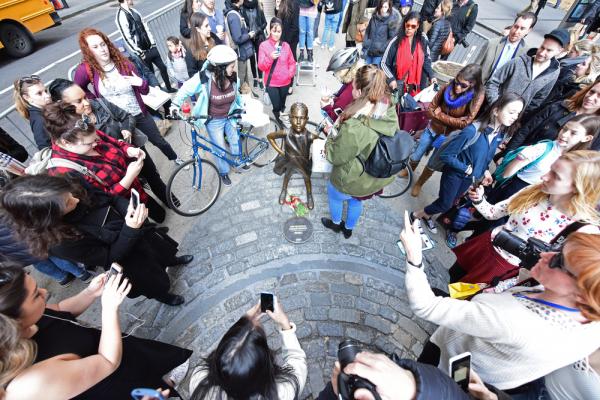Mar 27, 2017
The statue will live on Wall Street for a year, after popular support pressured to city to allow the statue beyond its one-week permit. The extension is a small victory. But her removal next year will be a quieter, yet no less important visual: Wall Street’s unwillingness to feature women in a public space without an end date.
Read the Full Article

Already a subscriber? Login
